A first look inside BIG’s watch museum for Audemars Piguet in Switzerland
Bjarke Ingels Group has designed a spiralling museum for the Swiss watchmakers in the Jura Mountains
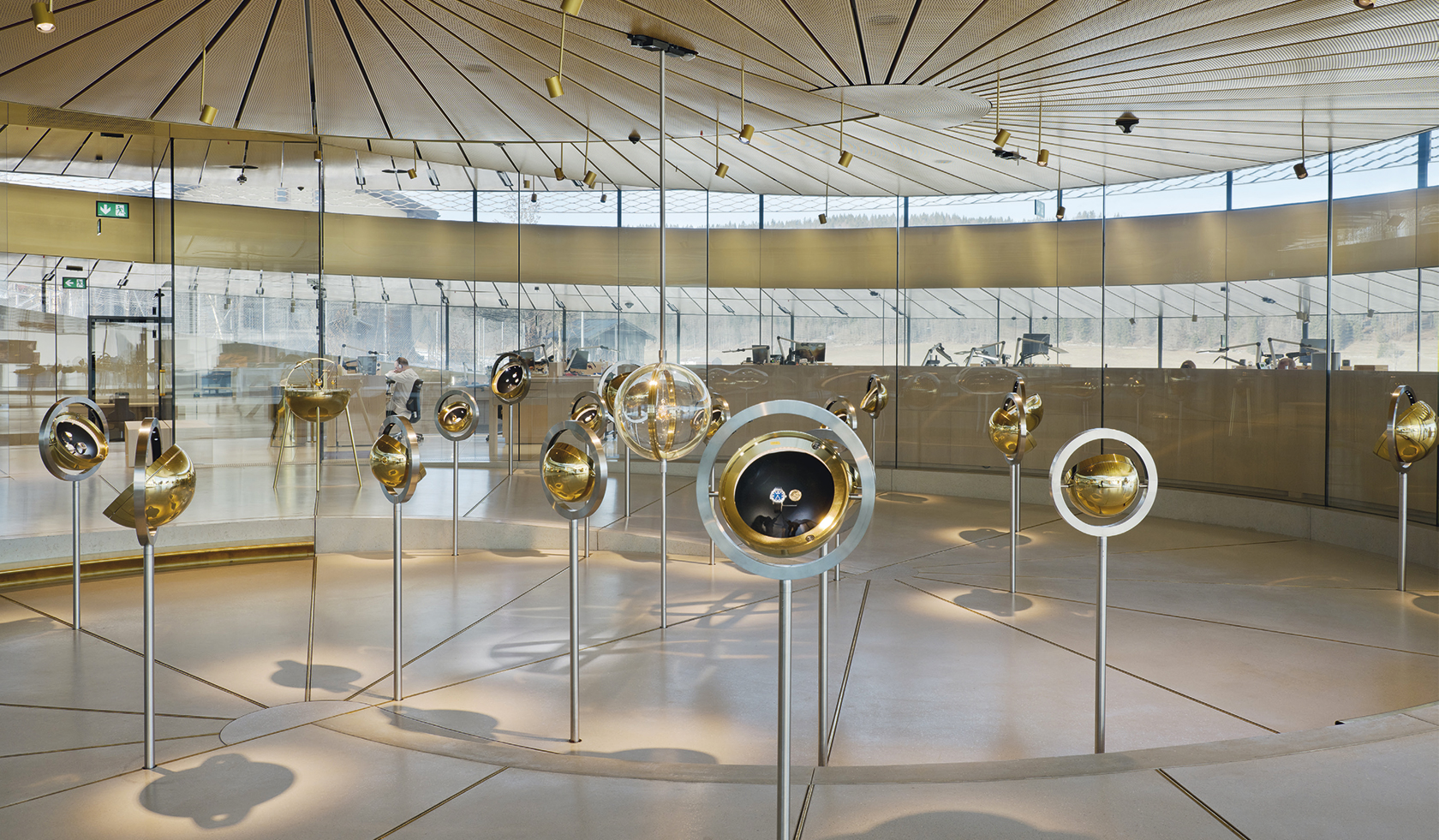
Designing a museum in the sublime form of a shimmering peel of glass unfurling from a mountain in a tiny Swiss village is one thing. But, as architect Bjarke Ingels now knows, actually building it in the remote Jura Mountains is most definitely another.
Six years since his practice, BIG, won the competition to design the Audemars Piguet Founder’s House Museum in the Swiss village of Le Brassus, the museum is on course to open its doors in summer 2020. But, like all best laid plans at present, the brand has delayed the opening date until the end of the year, in light of the necessary Covid-19 restrictions. Created in association with Atelier Brückner, engineers Lüchinger+Meyer, and landscape specialists Muller Illien, BIG’s poetic glass swirl exists despite the fact that construction was predestined to be difficult: whipped by mean north-east winds, temperatures in the Vallée de Joux can fall severely in the long winter months. The glass used in the project was designed to withstand extreme temperature fluctuations, but also proved so tough that it is load-bearing enough to negate the need for other walls.
‘It’s a complicated building. At first, we thought it was crazy, then we just thought, let’s do it,’ says a smiling Jasmine Audemars, chairwoman of the board of directors at Audemars Piguet. ‘We make complicated watch designs and we like to complicate our lives.’ Now in her seventies, the great-granddaughter of founder Jules Audemars has inherited the family knack for taking the long view and doing the wrong thing brilliantly.
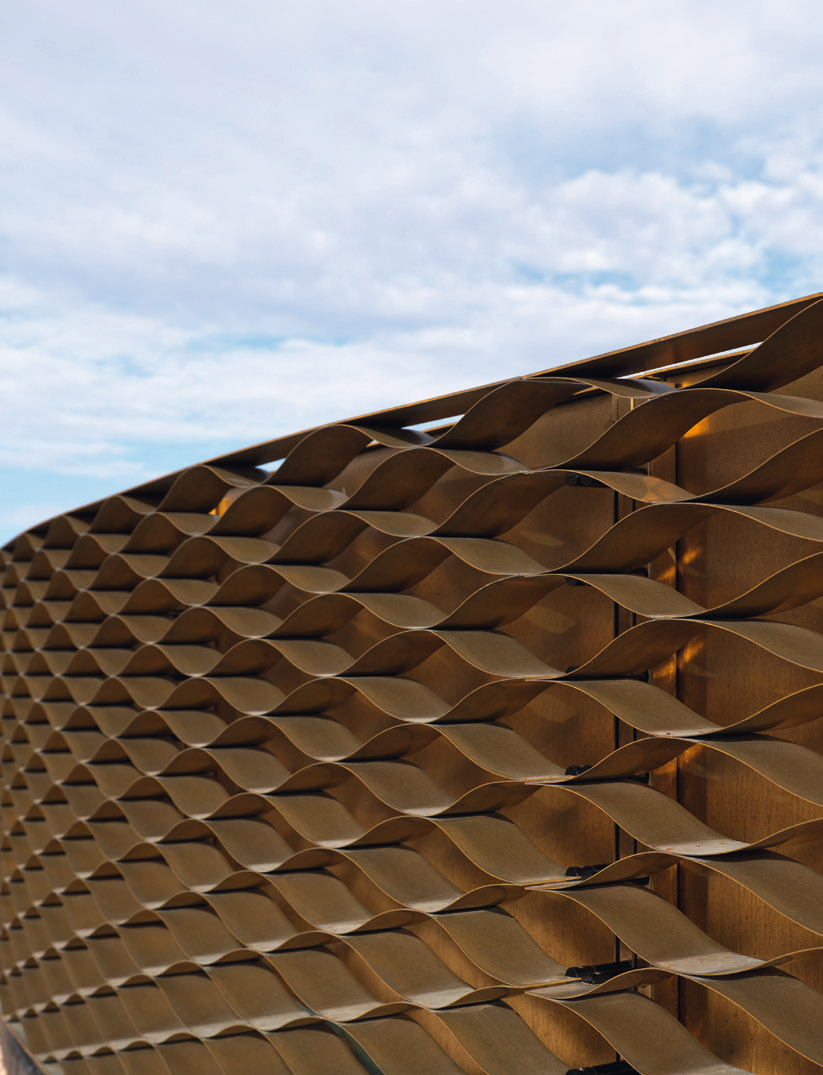
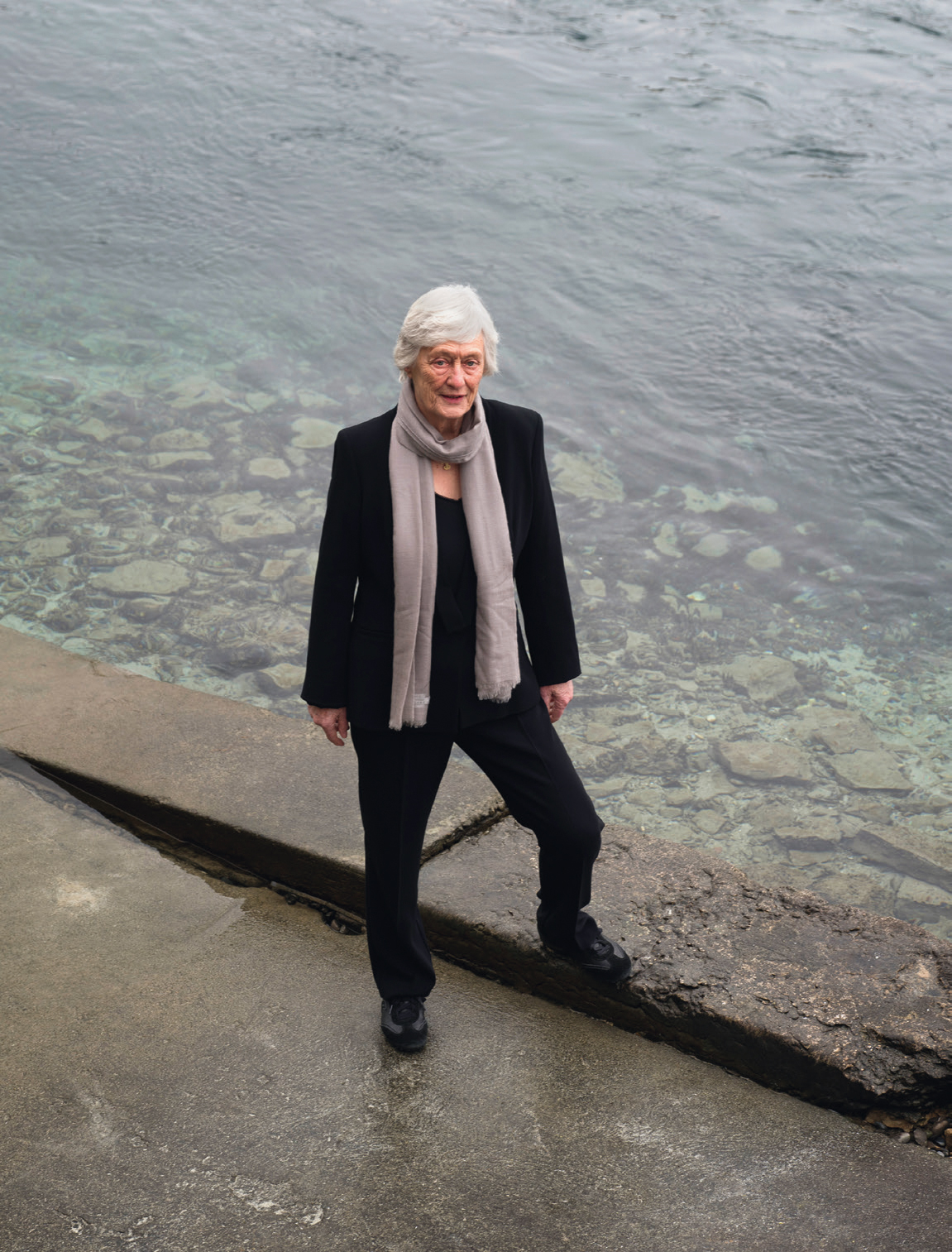
Above, a brass honeycomb veil is wrapped around part of the structure to provide shade. Below, Jasmine Audemars, chairwoman of the board of directors at Audemars Piguet
Her father, Jacques Louis Audemars, was, after all, the man who backed the most lauded watch designer of all time, Gérald Genta, when, in 1970, Genta proposed a new ‘luxury’ watch that eschewed gold in favour of steel but that was no less expensive. Beautifully finished and polished, the humble metal took on a precious quality. The result was the groundbreaking Royal Oak watch. Initially derided, it is now hailed as a design classic and remains Audemars Piguet’s bestseller.
The decision to build a world-class architectural structure in the protected environs of the watchmaker’s valley home, lay, ultimately, on Jasmine Audemars’ shoulders. A trained economist, and 12-year editor-in-chief of the Journal de Genève newspaper (now known as Le Temps), she took the helm of the family-owned business in 1992. Perhaps, then, it’s no surprise that she says the decision to invest in a specifically ambitious architecture commission was ‘simply because today we have the time and the means. The museum is an extension of my grandfather’s house, where the business was established in 1875. Yes, there have been problems, surprises, but this is our legacy for the next 200 years. And, if you divide the investment by 200 years – it’s cheap!’
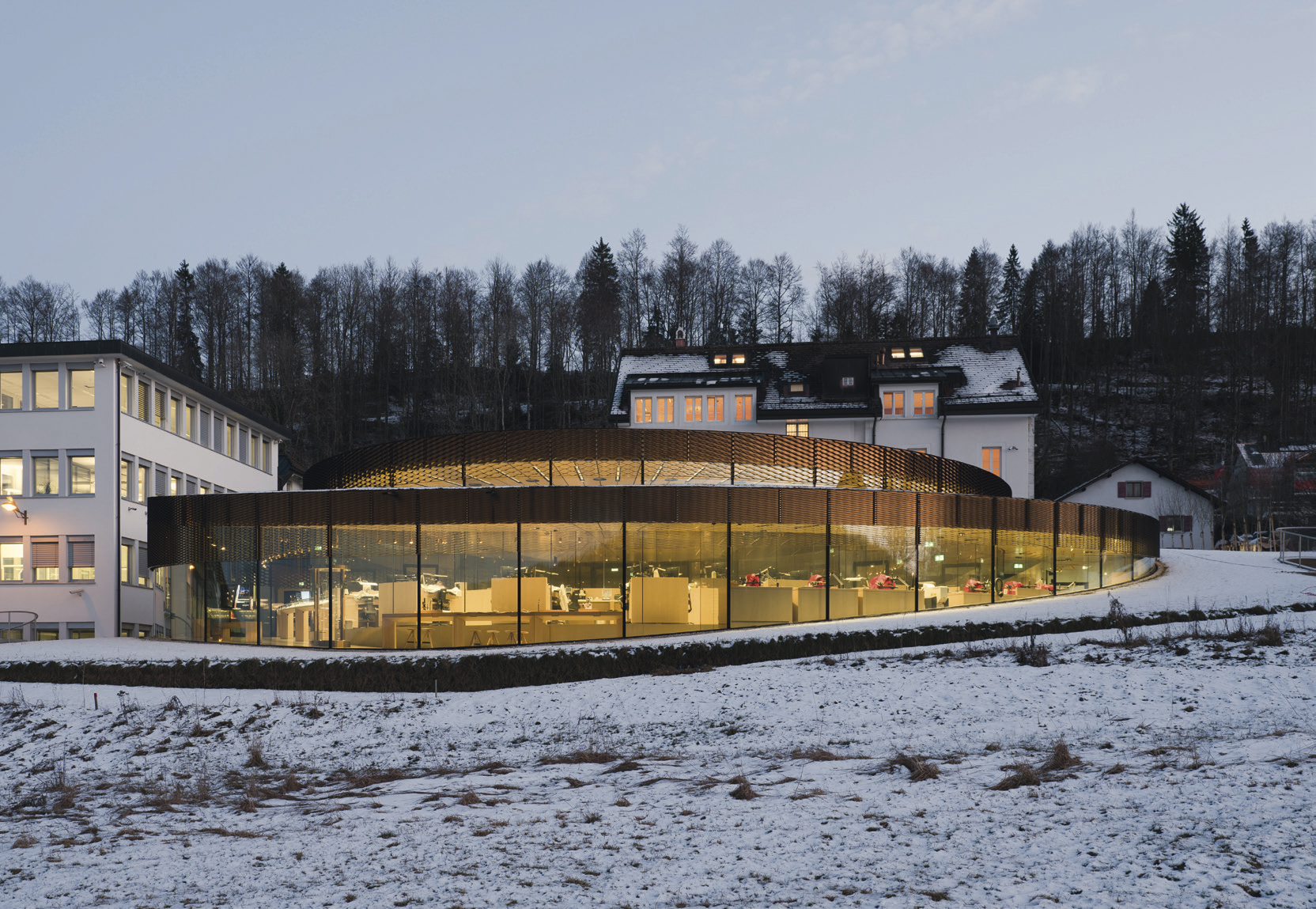
The spiralling museum coils up from the landscape in Switzerland's Vallée de Joux
When the yellow winter sunlight swathes the museum’s layers of thick glass in a reflective golden haze, illuminating its spaceship-like watch vitrines and architectural twists and turns, the effect is kaleidoscopic. But, while that otherworldly atmosphere, heightened by the museum’s quirky mechanical installations, is a magical visitor experience, the unhampered sunlight had threatened to overheat the on-site watchmakers. The solution was to wrap a steel-and-brass honeycomb veil around the exterior that provides shade at pertinent times in the day. ‘The shape and the glass of the museum design mean you immediately discover the landscape, the changes in the light across the valley – you can see where the watches come from,’ says Audemars. ‘It really was love at first sight for BIG’s design. Bjarke got the spirit of what, who and where we are but in a global way. It’s a very distinct building but it’s discreet.'
What it does boast is a compelling interior design, where a carefully curated exploration of 145 years of Audemars Piguet’s horological and technical innovation gets the balance between its past and future vision just right.
‘The shape and the glass of the museum design mean you immediately discover the landscape, the changes in the light across the valley – you can see where the watches come from’ — Audemars Piguet
Another aspect of the brief was highlighting the work of the Audemars Piguet Foundation, established in 1992. And so, in one corner of the museum atrium, a carefully cultured linden tree grows. ‘The Vallée de Joux is surrounded by magnificent, protected forests, mostly untouched by civilisation, so tree and forest conservation were a natural subject for the Foundation back then. We wanted to contribute to and enable communities around the world to benefit from forests as beautiful as ours.’
The Foundation is also testament to the strong survival instincts of her family business. ‘We have strong roots in the valley – we have survived wars and crises, and this new museum is our vision for the future. The people of the valley deserve it. It’s a celebration of all our culture. It is not ruining the landscape but adding a new tradition.’
A version of this article originally appeared in the April 2020 issue of Wallpaper* (W*253) — on newsstands now
INFORMATION
The Founder’s House Museum will open for public visits, by appointment, at the end of 2020.
museeatelier-audemarspiguet.com
Receive our daily digest of inspiration, escapism and design stories from around the world direct to your inbox.
Caragh McKay is a contributing editor at Wallpaper* and was watches & jewellery director at the magazine between 2011 and 2019. Caragh’s current remit is cross-cultural and her recent stories include the curious tale of how Muhammad Ali met his poetic match in Robert Burns and how a Martin Scorsese Martin film revived a forgotten Osage art.
-
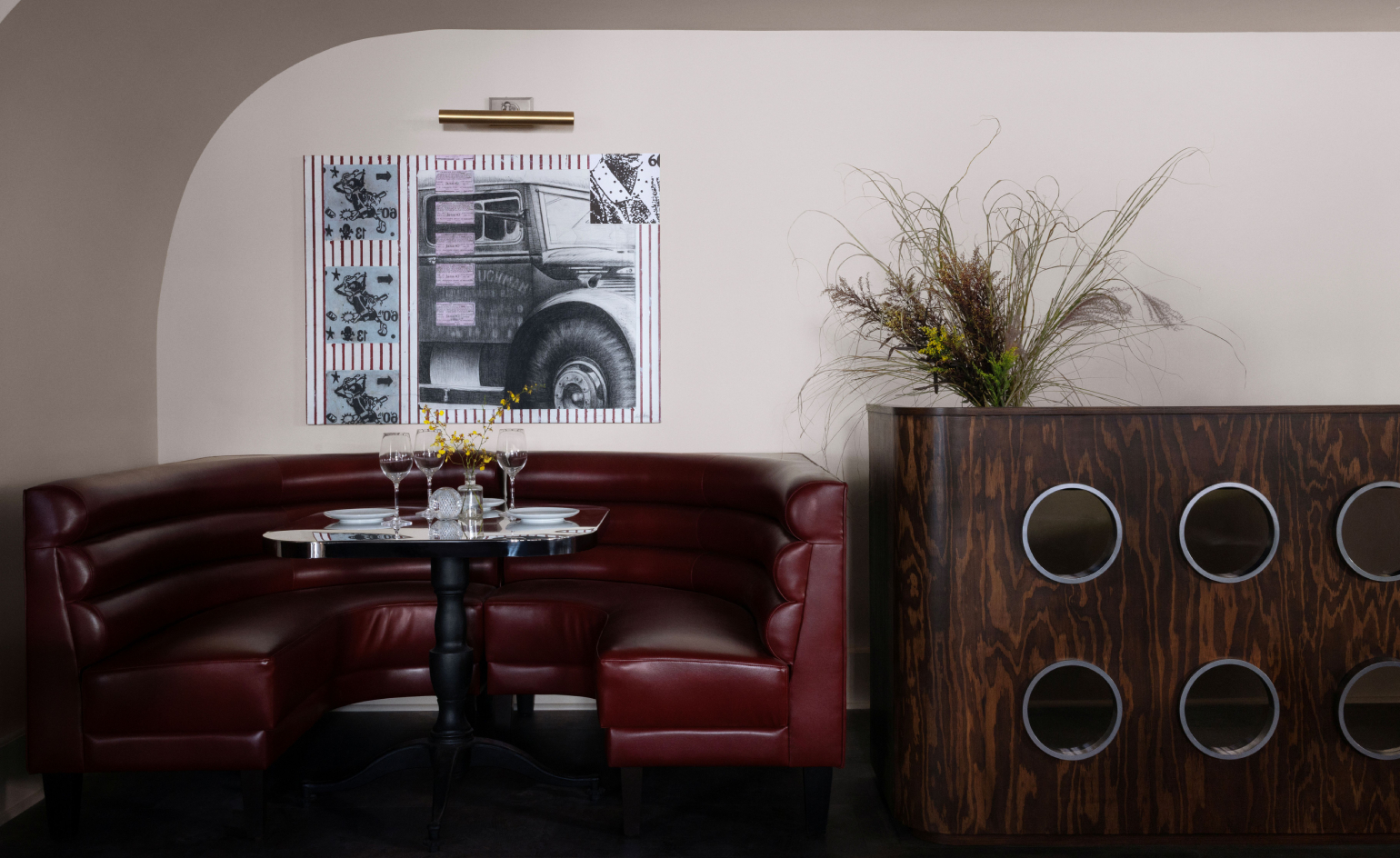 This late-night hangout brings back 1970s glam to LA’s Sunset Boulevard
This late-night hangout brings back 1970s glam to LA’s Sunset BoulevardGalerie On Sunset is primed for strong drinks, shared plates, live music, and long nights
-
 How Memphis developed from an informal gathering of restless creatives into one of design's most influential movements
How Memphis developed from an informal gathering of restless creatives into one of design's most influential movementsEverything you want to know about Memphis Design, from its history to its leading figures to the pieces to know (and buy)
-
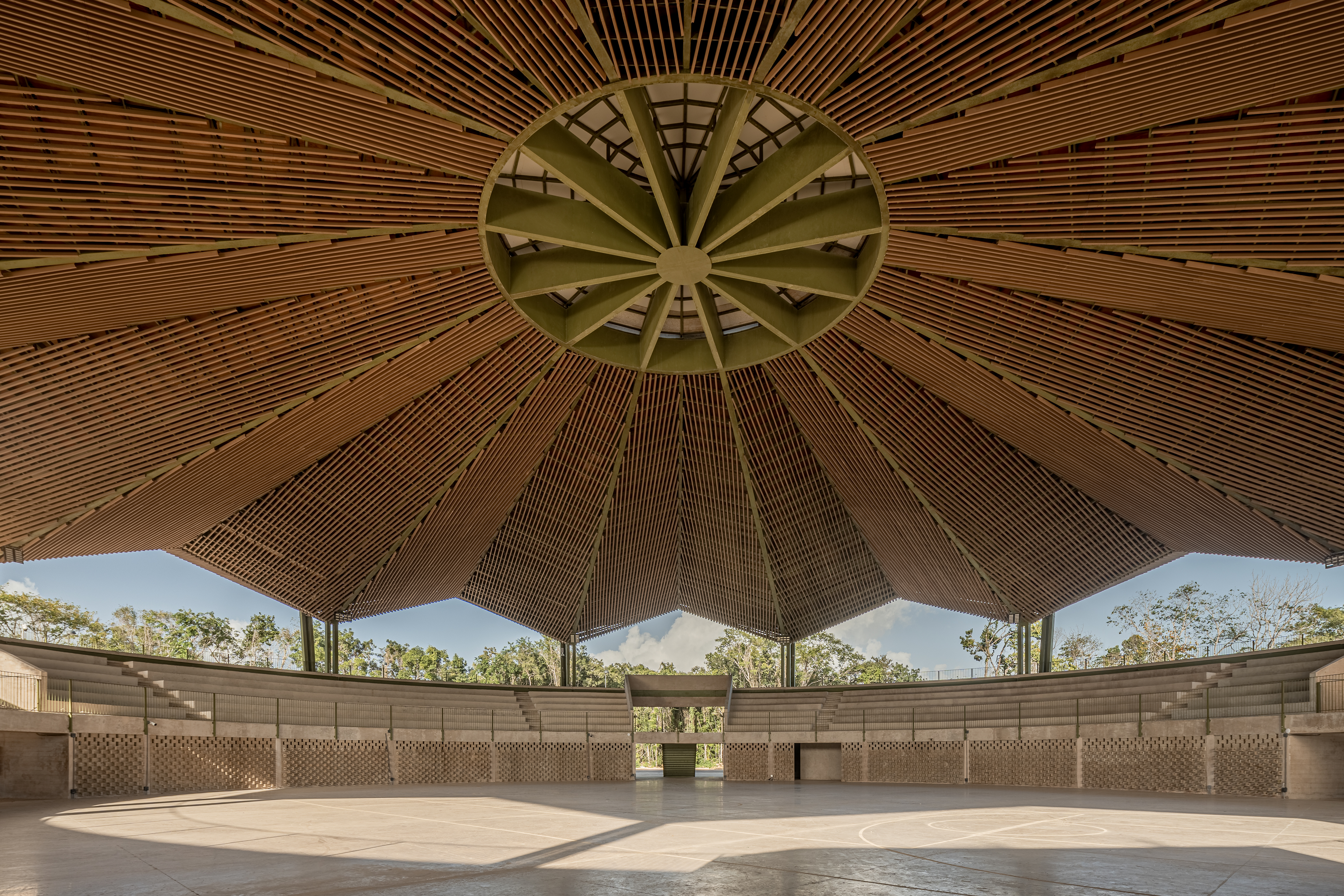 Aidia Studio's mesmerising forms blend biophilia and local craft
Aidia Studio's mesmerising forms blend biophilia and local craftMexican architecture practice Aidia Studio's co-founders, Rolando Rodríguez-Leal and Natalia Wrzask, bring together imaginative ways of building and biophilic references
-
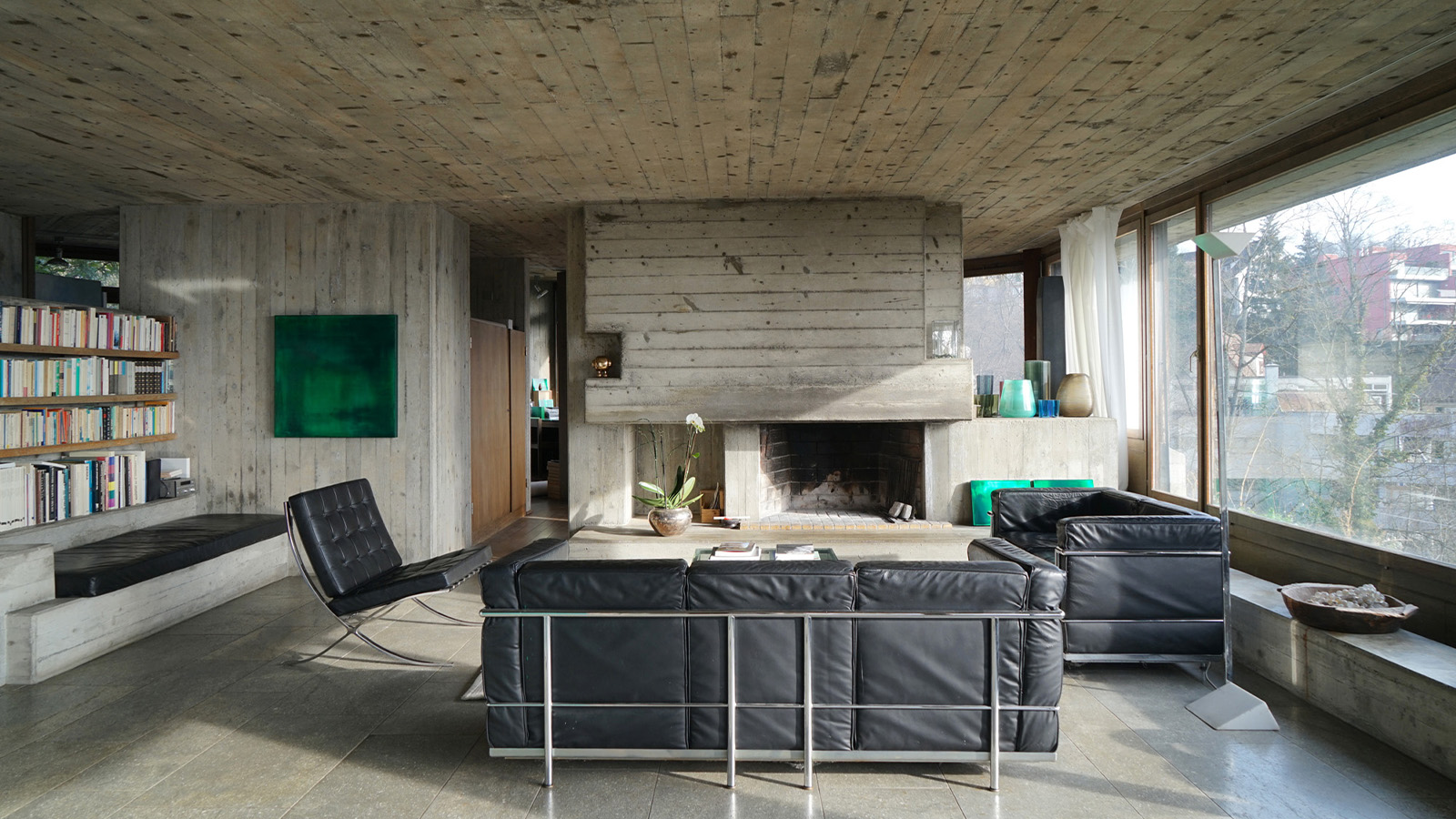 Inside architect Andrés Liesch's modernist home, influenced by Frank Lloyd Wright
Inside architect Andrés Liesch's modernist home, influenced by Frank Lloyd WrightAndrés Liesch's fascination with an American modernist master played a crucial role in the development of the little-known Swiss architect's geometrically sophisticated portfolio
-
 In the heart of Basque Country, Bjarke Ingels unveils a striking modular building devoted to culinary research
In the heart of Basque Country, Bjarke Ingels unveils a striking modular building devoted to culinary researchSee what the architect cooked up for the Basque Culinary Center in San Sebastián, Spain
-
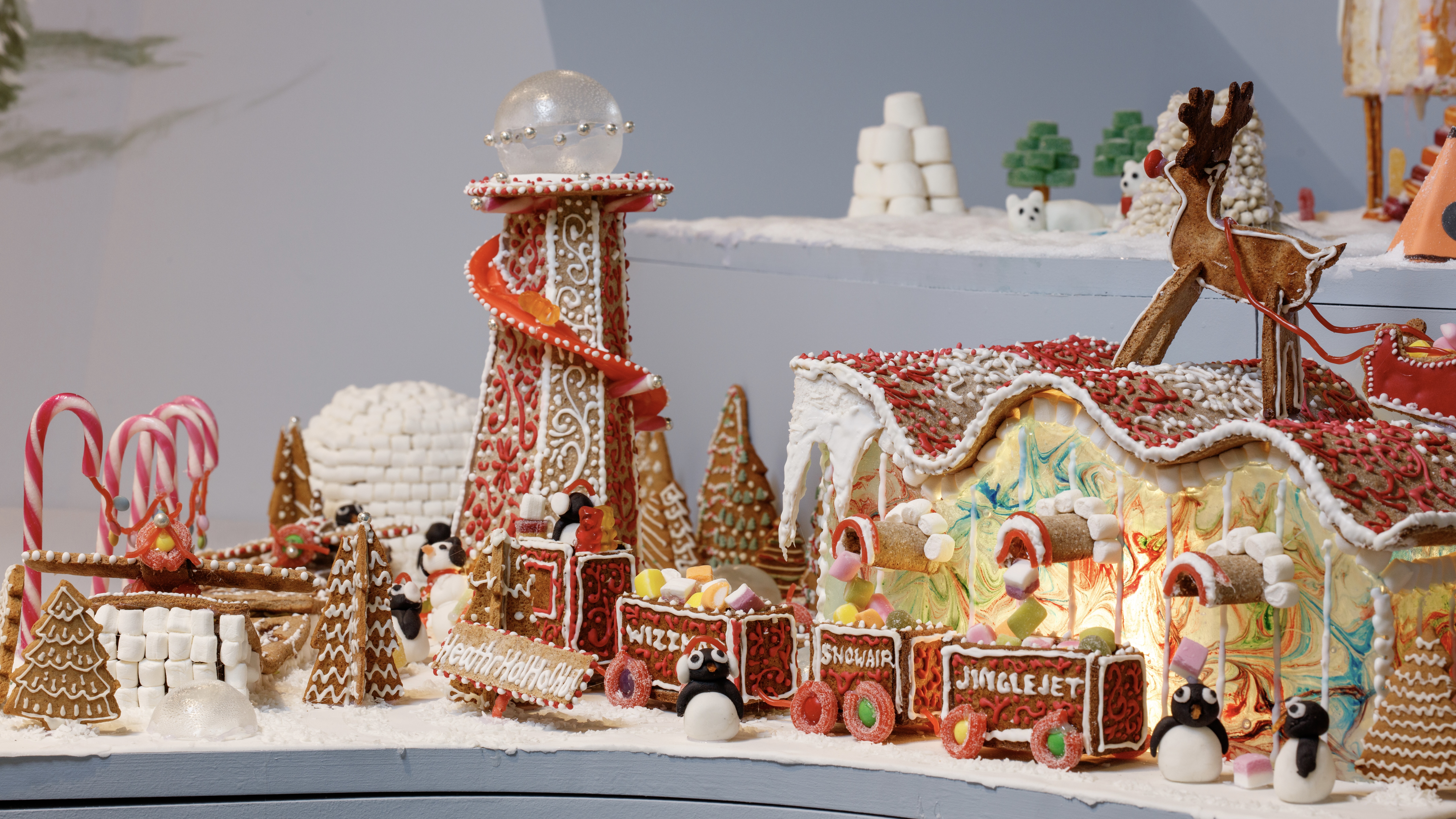 Welcome to The Gingerbread City – a baked metropolis exploring the idea of urban ‘play’
Welcome to The Gingerbread City – a baked metropolis exploring the idea of urban ‘play’The Museum of Architecture’s annual exhibition challenges professionals to construct an imaginary, interactive city entirely out of gingerbread
-
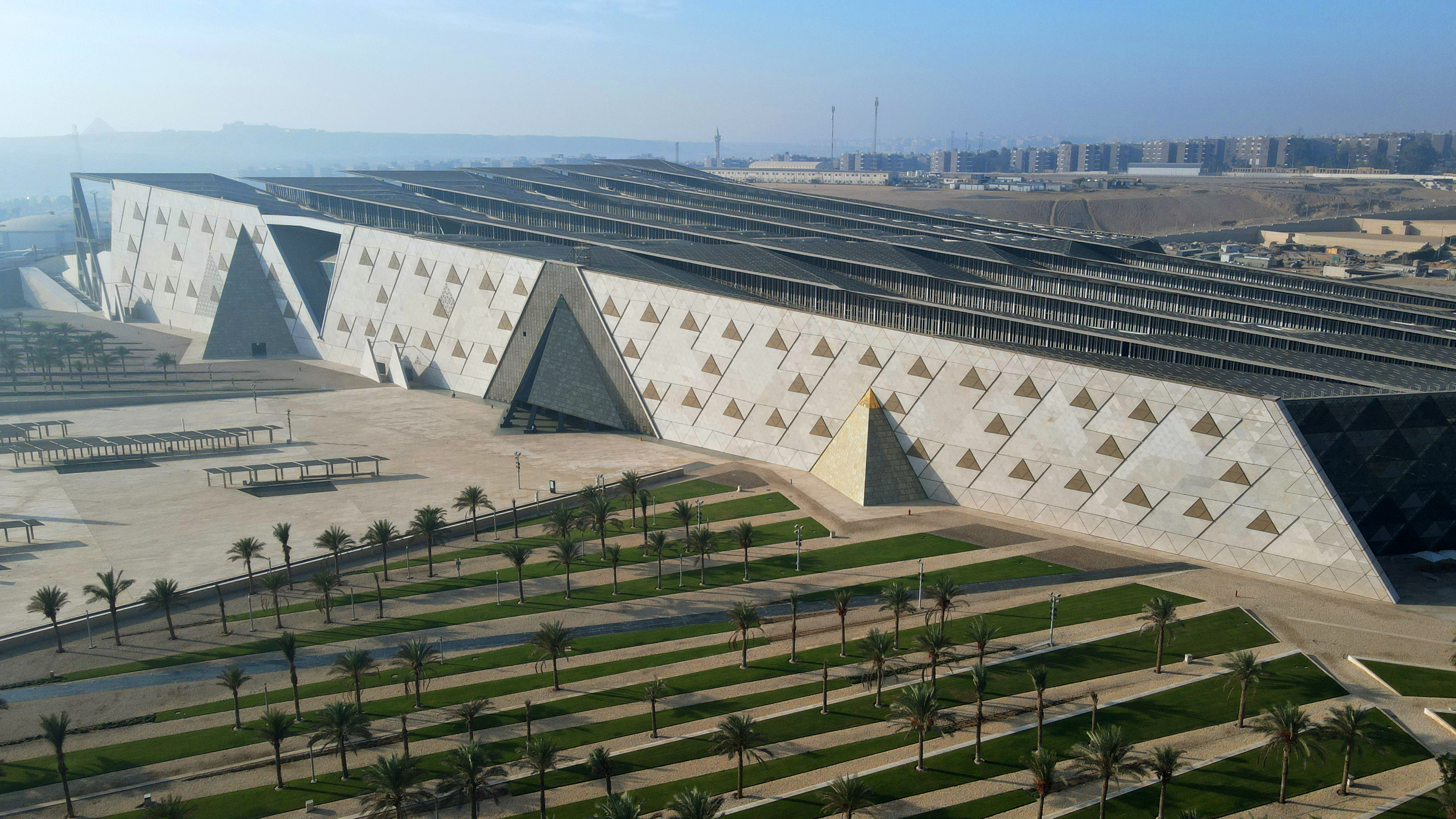 The Grand Egyptian Museum – a monumental tribute to one of humanity’s most captivating civilisations – is now complete
The Grand Egyptian Museum – a monumental tribute to one of humanity’s most captivating civilisations – is now completeDesigned by Heneghan Peng Architects, the museum stands as an architectural link between past and present on the timeless sands of Giza
-
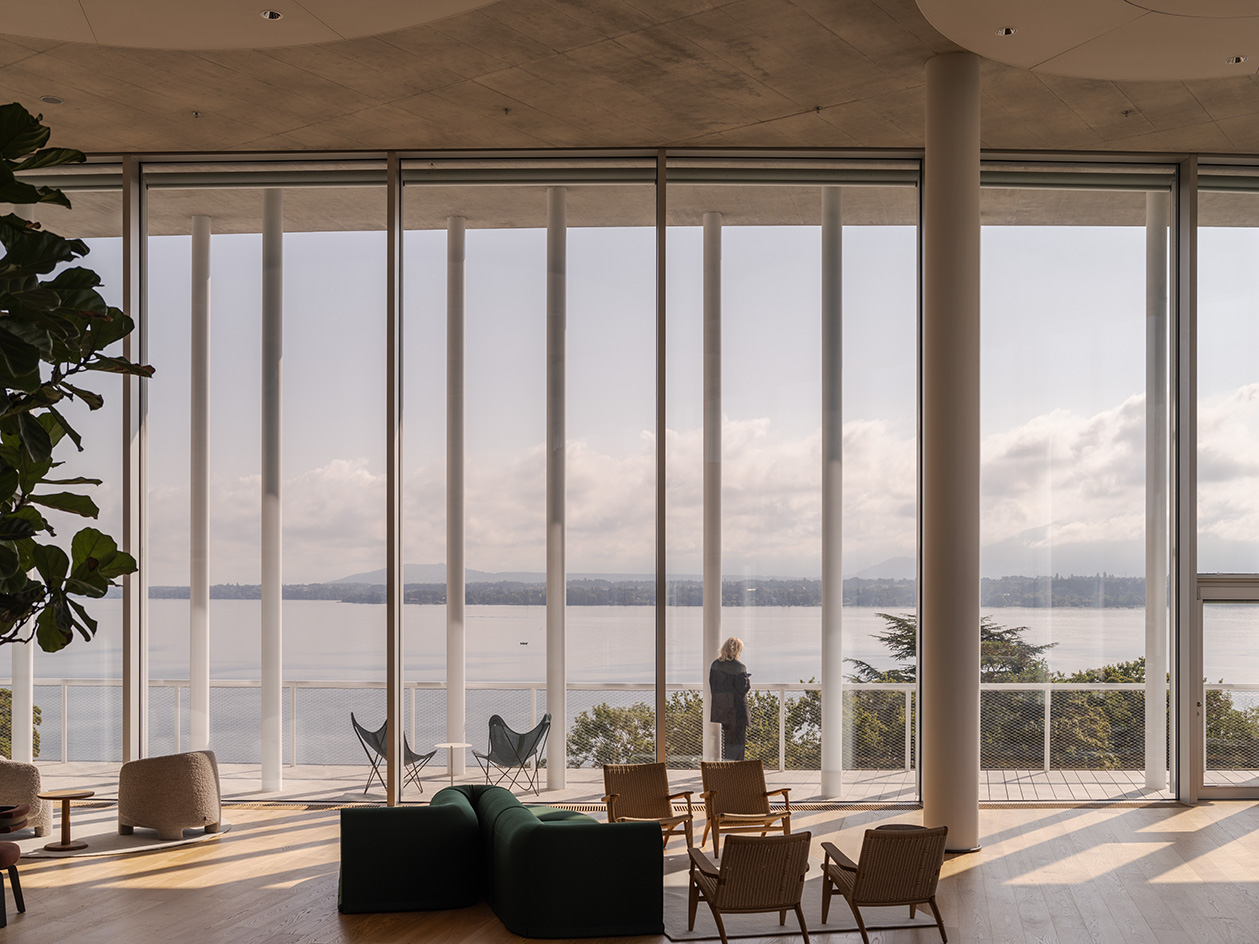 A building kind of like a ‘mille-feuille’: inside Herzog & de Meuron’s home for Lombard Odier
A building kind of like a ‘mille-feuille’: inside Herzog & de Meuron’s home for Lombard OdierWe toured ‘One Roof’ by Herzog & de Meuron, exploring the Swiss studio’s bright, sustainable and carefully layered workspace design; welcome to private bank Lombard Odier’s new headquarters
-
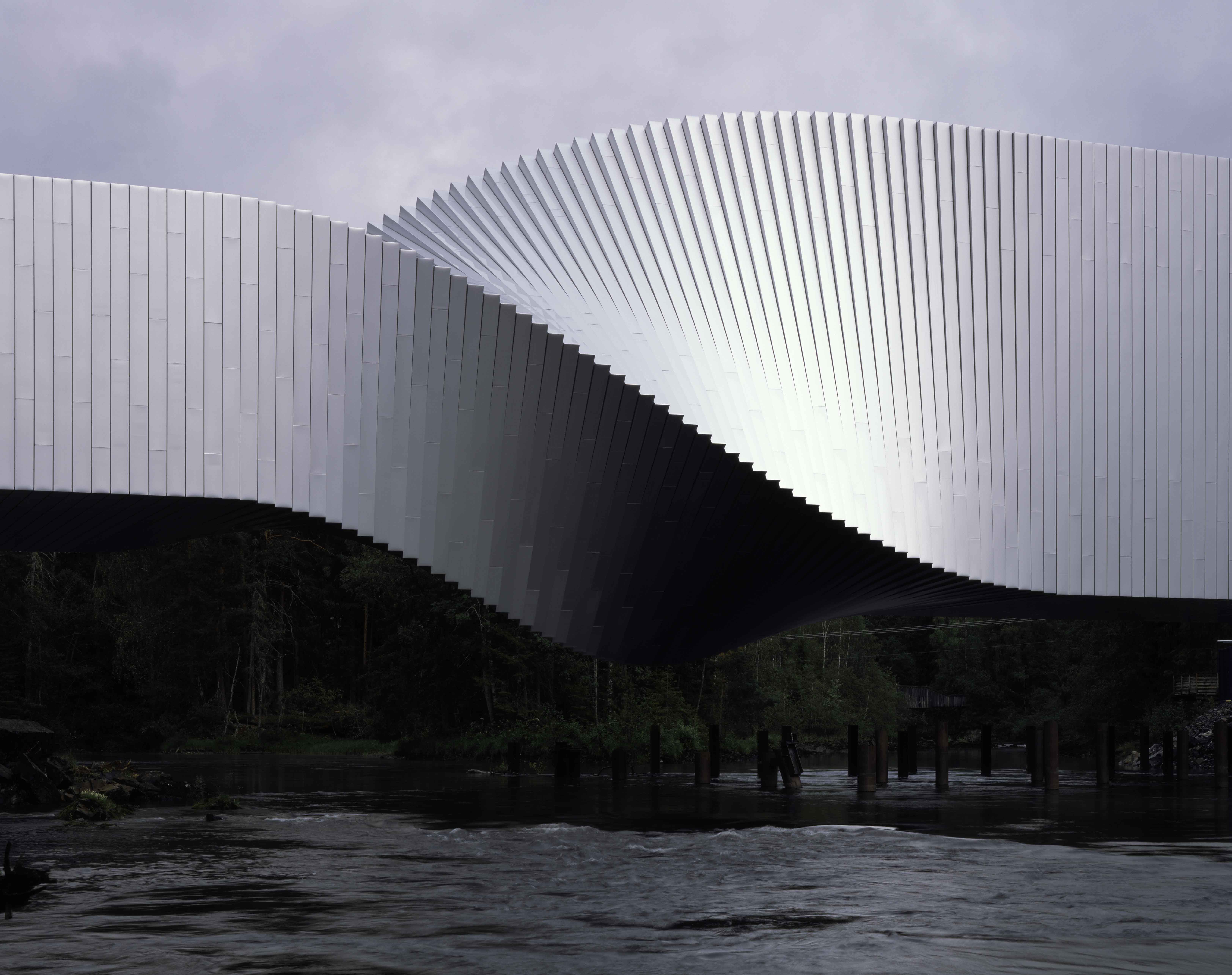 Discover Bjarke Ingels, a modern starchitect of 'pragmatic utopian architecture'
Discover Bjarke Ingels, a modern starchitect of 'pragmatic utopian architecture'Discover the work of Bjarke Ingels, a modern-day icon and 'the embodiment of the second generation of global starchitects' – this is our ultimate guide to his work
-
 George Lucas’ otherworldly Los Angeles museum is almost finished. Here’s a sneak peek
George Lucas’ otherworldly Los Angeles museum is almost finished. Here’s a sneak peekArchitect Ma Yansong walks us through the design of the $1 billion Lucas Museum of Narrative Art, set to open early next year
-
 The great American museum boom
The great American museum boomNine of the world’s top ten most expensive, recently announced cultural projects are in the US. What is driving this investment, and is this statistic sustainable?